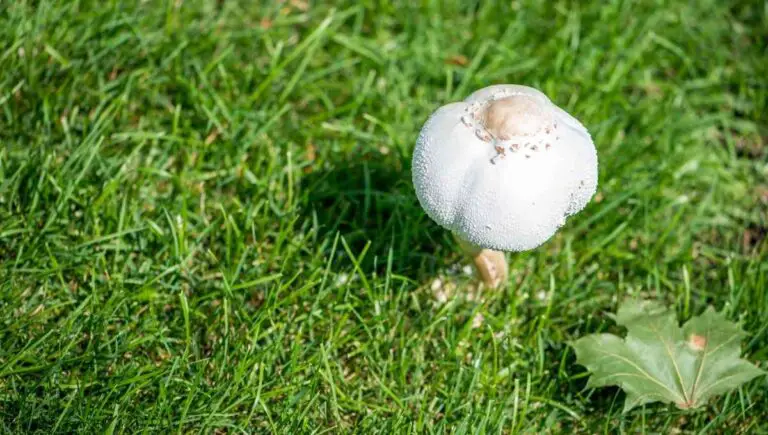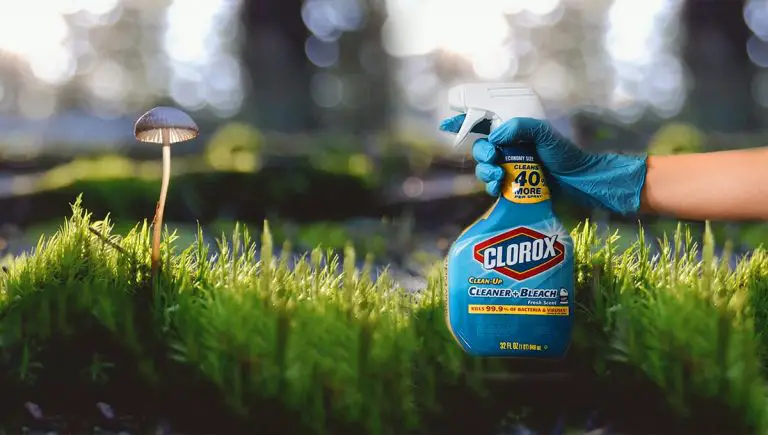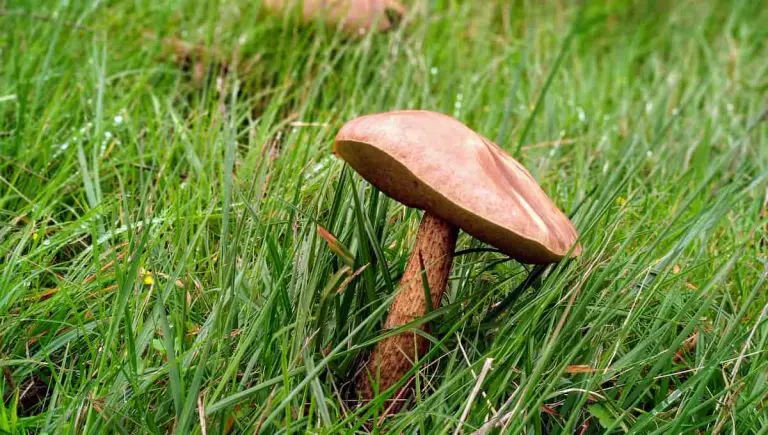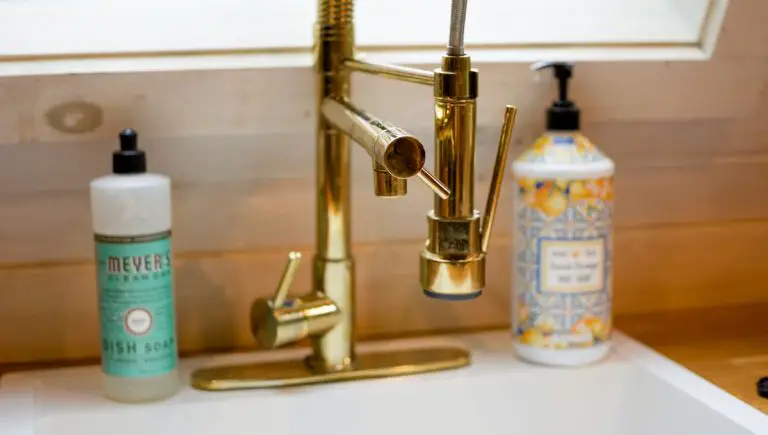Can a Garden Hose Be Buried? (Here’s How to Do It Easily)
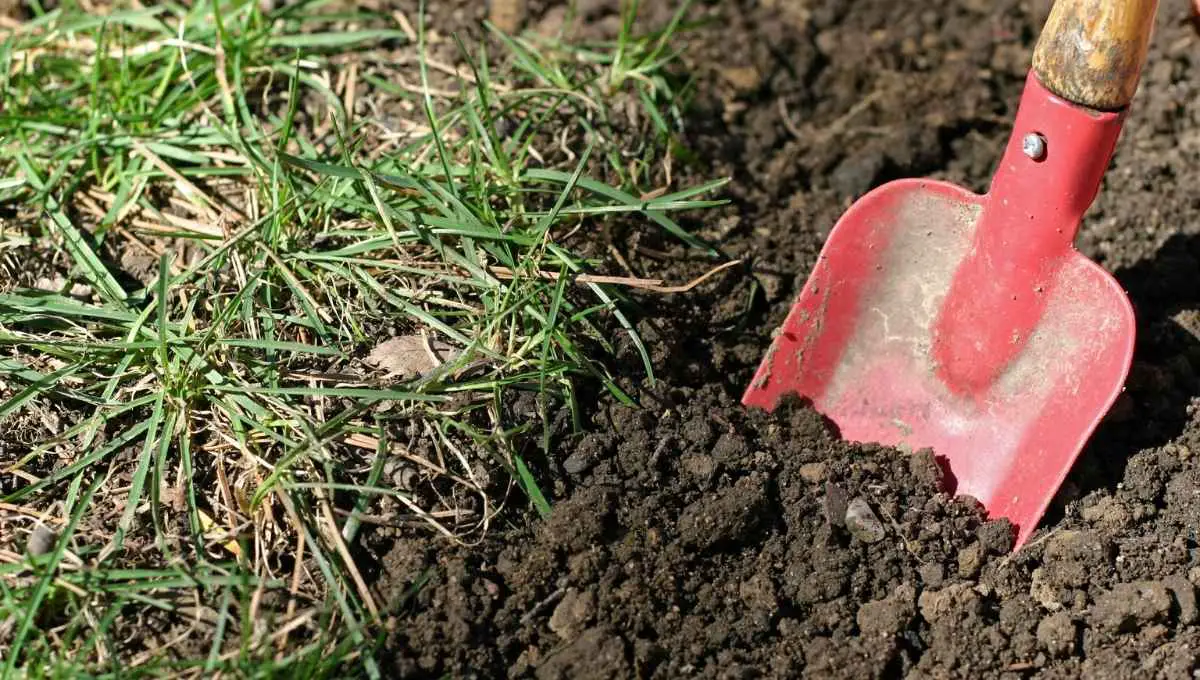
No one enjoys lugging their garden hose up and down the lawn. Although lawn and garden maintenance is important for many homeowners, surely there must be an easier method to transport water, right? You’ve probably thought about burying the hose to make life easier, but can it be done?
A garden hose can be easily buried in your backyard to make transporting water easier. However, it requires digging a small trench along the path you prefer and ensuring your hose is of good quality. You should also consider the soil type in your yard and how deep you need to bury the hose.
Environmental circumstances are one of the factors that you need to consider when burying your hose. In this article, we’ll discuss exactly how to bury a garden hose and what you should consider before attempting the job.
This post contains affiliate links from Amazon and other stores. This means Yard Blogger may earn a commission if you make a purchase using any of our links. Please refer to our full affiliate disclosure policy for full details.
Here’s a Quick Pro Tip!
Burying a garden hose is not a particularly difficult project, but it will require some time and effort on your part. However, the benefits of burying a garden hose outweigh the effort needed to dig the trench, trust us!
Here are three of our favorite must-have products for the next time you’re burying a garden hose or anything else:
1. Shovel – Needed to dig the trench.
2. Rake – Ideal to smooth the soil after burying the hose.
3. Rubber garden hose – Top-rated and very durable, perfect for burying underground.
Garden hose burial
Carrying a garden hose around the garden is not comfortable or enjoyable. So burying the garden hose is the next logical thought. Let’s discuss what obstacles you might face when burying your garden hose.
Can You Bury a Garden Hose?
Garden hoses can be buried underground and still be able to transport water. This is because they are typically made of sturdy vinyl, rubber, or polyurethane material that is not affected by the bacteria in the soil. However, there are some factors to take into consideration.
If you live in a particularly cold area where the ground freezes, you might need to replace your hose sooner than you think.
Although the material can withstand freezing temperatures, it will cause the hose to break down easier over time.
If your area is prone to rodents like rats, they might be inclined to gnaw at your hose, especially since these rodents are attracted to water.
The type of soil that your garden has can also impact how difficult it would be to dig into it.
Can You Bury a Leaky Garden Hose?
Burying a leaky garden hose will simply cause the leaks to clog, and your hose will function normally. Additionally, if you’re planning on using it as a soaker hose alternative, it will not work.
You could also fix a leaky garden hose before burying it. First, seal small holes with electrical tape or use a hose mender to fix large tears.
Then, remove the torn section and replace it with a small metal tube. The hose connector also has colors to tighten the metal tube and prevent leaks.
How Can I Hide My Outside Hose?
The best option is to bury your house under about five inches of soil. No one will see your hose, but it will still be able to transport water to where you need it. Thankfully, it is very easy to hide your hose outside.
If your garden hose is a loose feature, you could hide it inside your outdoor furniture. Alternatively, you could buy a color hose that camouflages itself.
For example, you could buy a green hose for a lawn, but a brown hose might camouflage better for a vegetable garden.
Can I Leave My Hose Outside?
You can leave your garden hose outside year-round, although this might impact the integrity of the hose. However, there are a few precautions to keep in mind if you leave your hose outside full time.
You will use the hose most in the summer months, but it should not be left in direct sunlight but rather in the shade.
Also, before the winter temperatures set in, you should completely drain all the water from your hose. This will ensure freezing water will not accidentally tear the hose.
What Kind of Hose Can I Bury Underground?
You could bury any hose, but the most sturdy would be a polyurethane garden hose. These garden hoses can withstand the pressure from the soil above and won’t kink as easily as a vinyl garden hose.
When burying a polyurethane garden hose, pick a different color than the surrounding soil. This will make it easier to dig up again.
Also, pick a hose with a large diameter (¾ inch and upward) to get the best water flow.
Can You Bury a Heated Hose?
Many people bury a hose to prevent it from freezing in the winter, but a heated hose would not freeze, regardless of where it’s buried. So while you can bury a heated hose, it would not be necessary to do so to prevent freezing.
Another reason to bury a heated hose is to protect your hose from animals that might gnaw at it. This is especially relevant in rural areas.
Burying a hose also keeps it out of the way when mowing or playing in your yard, so burying your heated hose may still be a good idea.
Can I Bury a Stainless Steel Hose?
Burying a stainless steel hose does not impede the capabilities of the hose. It will be able to handle the pressure of the above soil and water pressure. It’s also not likely to burst when frozen.
A stainless steel hose is also corrosion-resistant, making it much more durable. In addition, the pipes are flexible and can handle a lot of water pressure, making them great for watering a large section of lawn.
The Life Length of a Buried Hose
It’s good and well to know that you can bury a garden hose, but let’s discuss the durability. Every hose is different, and a few factors influence the durability of a garden hose. In this section, we’ll discuss these factors.
How Long Will Rubber Last Underground?
A rubber garden hose buried underground will typically last at least one year or more. This varies depending on the quality of the hose, material, soil type, and other environmental factors.
A rubber hose is quite flexible, so it would easily kink around rocks or other obstacles when buried.
Additionally, rubber hoses tend to wear out easily, so you may have to replace them slightly more often than other hose types.
How Long Will a Garden Hose Last if Buried?
Usually, a garden hose will last a few years when buried. This depends on the quality and material of the hose, as also the soil type. Rocky and uneven soil could cause damage sooner than necessary.
Animals in your area could also impact the longevity of your buried hose. For example, a dog digging for a bone or wild animals looking for food might unintentionally pierce or damage your garden hose.
The ground freezing regularly would also diminish the durability of your hose.
Will My Garden Hose Get Ruined if I Bury It?
A garden hose is made of sturdy rubber, vinyl, or polyurethane. It will be easy to bury and transport water unnoticed, and burying hoses don’t hurt them. Sometimes it’s even more beneficial to bury your garden hose than to leave it on the surface.
To ensure that your hose lasts a long time when buried, you should pick a good quality hose that can handle a lot of water pressure and has thick walls.
Make sure to map out where you want to bury your hose, measure the distance, and buy a long enough hose.
What Do You Do About a Loose Underground Hose Connection?
When an underground hose gets loose from the connecter, the only option is to dig up the hose and tighten it to the connecter. Every situation differs. Some might need to dig up their whole hose while others don’t.
Inspect the problem, and if your connector is faulty, it might be time to purchase a new one. Also, any tears or damages could warrant a new connector.
A stainless steel connector is recommended, as they are less likely to get damaged by sharp rocks under the soil.
How to Bury Your Hose
After looking at all the factors and planning where you want to bury your hose, let’s look at the actual steps that you need to follow to bury your hose. We made it as simple as possible to follow along.
How Do You Bury a Garden Hose Underground?
Burying a garden hose is as easy as your planning. First, you should plan exactly where the path will be that you want the garden hose to follow. Make sure it doesn’t interfere with the roots of other plants! Choosing the right type of garden hose is also very important.
Here is the complete list of steps on how to bury your garden hose:
- Plan out from your faucet exactly where the hose is going to lay. Use string or rope to have a visual representation.
- Dig a six-inch deep and two-inch wide trench alongside your string/rope guideline. (You can bury your hose deeper if needed).
- Carefully place your hose in the cage. Look out for any sticks or sharp rocks that might damage the hose and remove them from the trench if necessary.
- Test your hose by opening the faucet.
- If you get water at your desired exit point, bury the garden hose by replacing the soil loosely over the hose where it’s sitting in the trench.
How Do You Run a Hose Underground?
After planning everything, use a shovel to dig a six-by-two-inch trench. If you have a lot of wild animals around, you may need to dig deeper. Carefully lay your hose in the trench and bury it, as simple as that!
No matter the reason why it is quite easy to run a hose under your lawn or garden. However, you need to plan exactly where you want to run it before starting to dig up your yard.
Improper planning could be catastrophic to your garden.
How Do You Install an Underground Hose?
Planning is the first and most important step. You should plan exactly where your hose will run and if it interferes with plants or tree roots. Then you can dig a trench. It does not have to be very deep, only about one foot.
After digging the trench, carefully lay your hose in it. Secure the connectors with the hose and ensure no holes or leaks. Turn on your water to test the water pressure, and if you are satisfied, close the trench.
How Do You Bury a Waterline for a Garden?
You could bury a garden hose or a PVC pipe as a waterline for your garden. Which one you choose depends on the layout of your garden. Plan exactly where you want the water line to run. You could use a string to see it visually.
If your plan has a lot of twists and turns, a hose would be the better option for you. If your plans are straight, a PVC pipe would be best.
Dig a one-foot-deep trench, and place your waterline inside. Be mindful of tree roots, as they can damage your waterline.
What’s the Best Underground Water Hose Storage?
To store your hose underground, you could bury it, even if it is not along your garden. This is a good option if you’re not using it for a whole season. You could also use an underground storage box.
Gardena sells a Spiral Hose Underground Storage Box. This box is perfect for storing your hose for the winter or when not using it.
However, we recommend simply burying your hose to store it underground to save money.
How Do You Connect an Underground Hose?
You could connect two underground hoses with a connector pipe, usually a short hose pipe or just the connector fitting. Then, place one end of the hose in the female and the other in the male end, and your water should flow right through.
These fittings should be readily available and easy to install. However, these connectors often leak over time, so you would need to check every few months if they are still tight.
If they are loose, you may need to replace them.
How Do You Separate Garden Hoses?
Hot water expands metal, so heat a pot of water to its boiling point and pour it over the lip where the hoses are stuck (the metal ring.) Immediately after, grab the two hoses and pull them apart, being careful not to burn yourself (we recommend wearing gloves!)
This technique should make it fairly easy to separate stuck garden hoses. You could also try to apply some metal lubricant to the connecting metal ring between the two hoses.
However, this has a less successful chance of working.
How Do You Run a Hose Under a Sidewalk?
To run a hose under a sidewalk, you need two hoses, a PVC connecting pipe, and brass hose connectors. The first step is to dig two trenches on either side of the sidewalk. Make sure they are at least a foot deep.
The complete list of steps of how to run a hose under a sidewalk:
- Dig two trenches on either side of the sidewalk, at least one foot deep.
- Measure the width of your sidewalk and use a PVC pipe cutter to cut a piece of PVC (schedule 40) pipe four feet longer than your sidewalk.
- Glue a male PVC hose end adapter fitting on each end of the PVC pipe.
- Then attach a brass ¾ female hose and a ¾ female pipe swivel to one end of the PVC male adapters.
- Connect the one hose to the female pipe swivel.
- On the other end of the PVC pipe, connect a sweeper nozzle.
- Place the pipe level in the trench with the nozzle facing the soil under the sidewalk.
- Turn on the water, and push with the nozzle, pushing it through the soil to the other side.
- The water coming out of the novel will help to loosen the soil. However, this depends on how loose the soil is around your house.
- After the whole PVC pipe and a good section of your garden hose are through, you can loosen the PVC pipe.
- Close the trench and marvel at your accomplishment!
How Do You Run a Hose Under a Deck?
Dig a 5-inch deep trench with a shovel on both sides of your deck where you want the hose to enter and exit. You might need to cut the lattice siding of your deck, depending on how big your hose is.
Depending on how low your deck is, you might need to dig with a trowel instead of a shovel. If your deck has lattice siding, you need to cut a small hole on either side for the hose to fit through.
If you live in a suburban area with no wildlife, you would not even need to bury your hose under the deck. Simply lay it straight and cover it with mulch or surrounding soil.
You could dig a trench under your deck and bury your hose. It would just require some maneuvering.
How Do You Bury a Sprinkler Hose?
Burying a sprinkler hose would restrict its capabilities and shouldn’t be buried. Sprinkler hoses are designed to water all the plants along with the hose through small holes in the tube, but these holes become clogged when buried.
Rather than burying the sprinkler hose, you should lay it on the ground between your plants and run it until the soil is damp.
You could purchase a color that is similar to the soil in an attempt to camouflage the sprinkler hose.
How Deep Should You Bury a Soaker Hose?
A soaker hose could be buried under 6 inches of soil. However, it is advised not to bury a soaker hose at all. The soil clogs the pores and defeats the whole purpose of a soaker hose.
We would rather recommend laying it on the ground and hiding it around rocks or trees. Also, buy a soaker hose the same color as your soil.
This will make it far less obtrusive, even when just lying on top of the soil.
How Do You Hide a Soaker Hose?
It’s not recommended to bury your soaker hose underground, but you can cover it with mulch if you want to hide it. Unlike soil, mulch will not clog the pores of the soaker hose and might, in fact, increase its efficiency.
Covering your soaker hose with mulch means less evaporation, saving some water. Mulch also helps prevent sun damage, the most common reason for soakers and garden hoses disintegrating.
How Do You Store a 100-Foot Hose?
To prevent any kinks in a long hose, the best way to store it is to roll it. Many wall-mounted or free-standing hose holders are perfect for keeping your hose kink-free but still available on a whim.
You could use a garden hose reel if you want something to move around with you. The cart does all the heavy lifting for you and winds and unwinds the hose. It’s a great tool to have if you use your hose regularly.
PVC Pipe Alternative
Instead of burying a garden hose, you could use something completely different and a lot more durable – PVC pipes. Let’s discuss these pipes and why they might be a better option for you and your water needs.
Should I Use a PVC Pipe Instead of a Garden Hose?
A PVC pipe is an excellent solution if you’re concerned about your garden hose being damaged when you bury it. PVC pipes are much more durable than garden hoses, so they won’t need maintenance or replacing them often.
The life expectancy for PVC pipes is over 100 years, so your environmental factors will not affect these pipes as easily. You could also drill small holes in the pipe to water the roots of your plants and trees.
How Do You Bury a PVC Pipe Underground?
After digging a trench, lay your PVC pipe and use PVC corner connectors. Connect the garden hose with the PVC pipe and test the water flow. If everything looks good and there is sufficient water pressure in the pipe, bury the PVC pipe.
A PVC pipe is not flexible, but you can use a corner connector (PVC elbow) to connect two straight pipes. Remember this when planning the path for the pipe.
Then dig a one-foot-deep trench. You should go deeper if your pipe is close to tree roots.
Can I Use PVC for a Garden Hose?
A PVC pipe is not as flexible as a garden hose, so it would not be ideal for replacing your garden hose completely. However, it can be used on the ground (or buried) as an irrigation system for your plants or lawn.
You could drill small holes into a PVC pipe to have it act as a soaker hose and water multiple plants at once. Then, the pipe can be laid along rows of vegetables or other plants.
Alternatively, you could bury the PVC pipe with the same intentions.
Can I Bury a PVC Pipe?
PVC pipes are used for plumbing and irrigation worldwide, and most of these are buried. It’s extremely durable and able to withstand more environmental challenges than any other pipe material.
Some regulations and codes must be followed for commercial purposes when installing PVC pipes underground. However, it is not necessary to follow these regulations for personal use.
You could consult a local contractor just to be sure, though.
You might also enjoy our post on Can You Bury an Extension Cord?
Related Questions
What Can You Use an Old Garden Hose For?
Anyone can use their old garden hose to make a new soaker hose by drilling small holes in the hose. This is also a frugal option, as new soaker hoses can be expensive. You could also use it to protect your electrical cords.
If you have electrical cords hanging outside your house for security cameras, or any other appliance, you could use an old hose to protect the cords from the weather.
Cut the hose lengthwise and pop the cord inside.
What Can I Use Instead of a Hose?
You could use a PVC pipe instead of a hose for ground-level irrigation of your lawn and plants. Although these pipes will be harder to hide, they will last much longer than your average garden hose.
That being said, there are currently no products that could replace the classic garden hose. This is mostly because a garden hose is extremely versatile.
For example, you could transport water to your lawn, clean your walls, fill a swimming pool, etc.
Final Thoughts
Burying your garden hose is perfectly safe and not as difficult as it might seem. Of course, you must consider factors such as the soil, the quality of the hose, and animals.
Although, in most cases, it is worth it to bury your garden hose!











